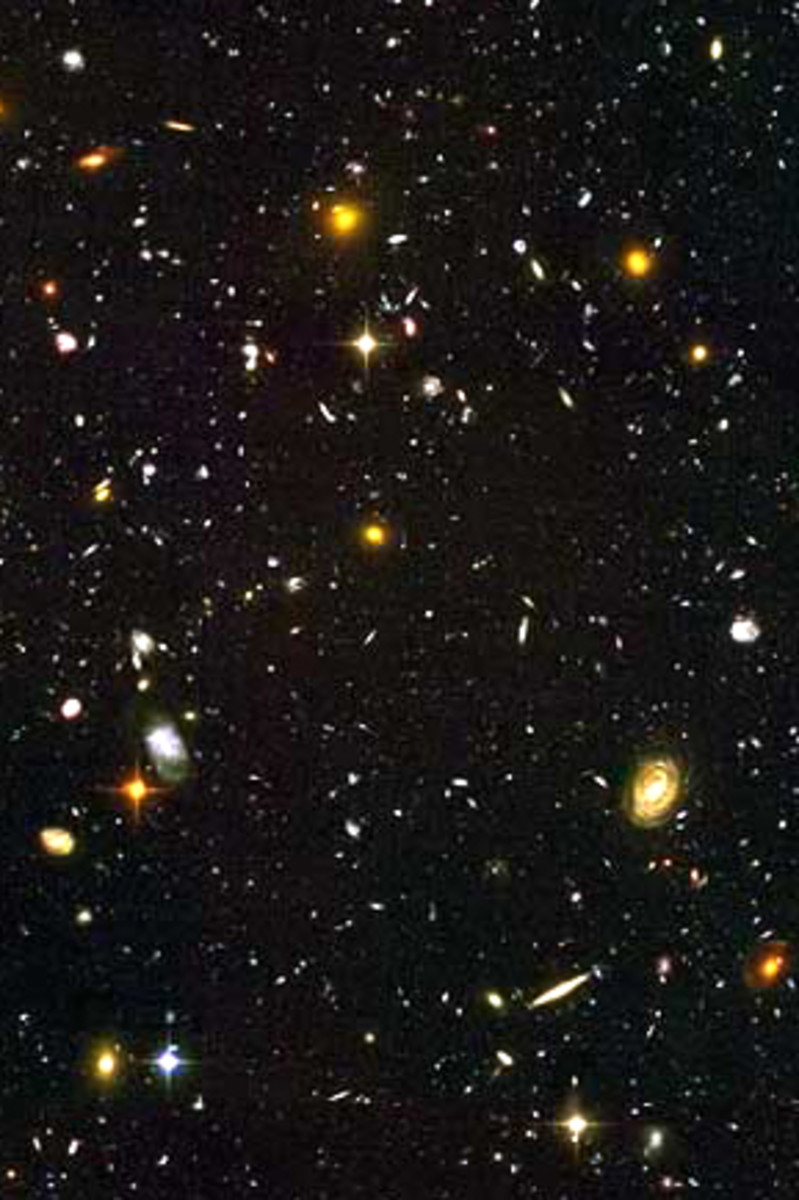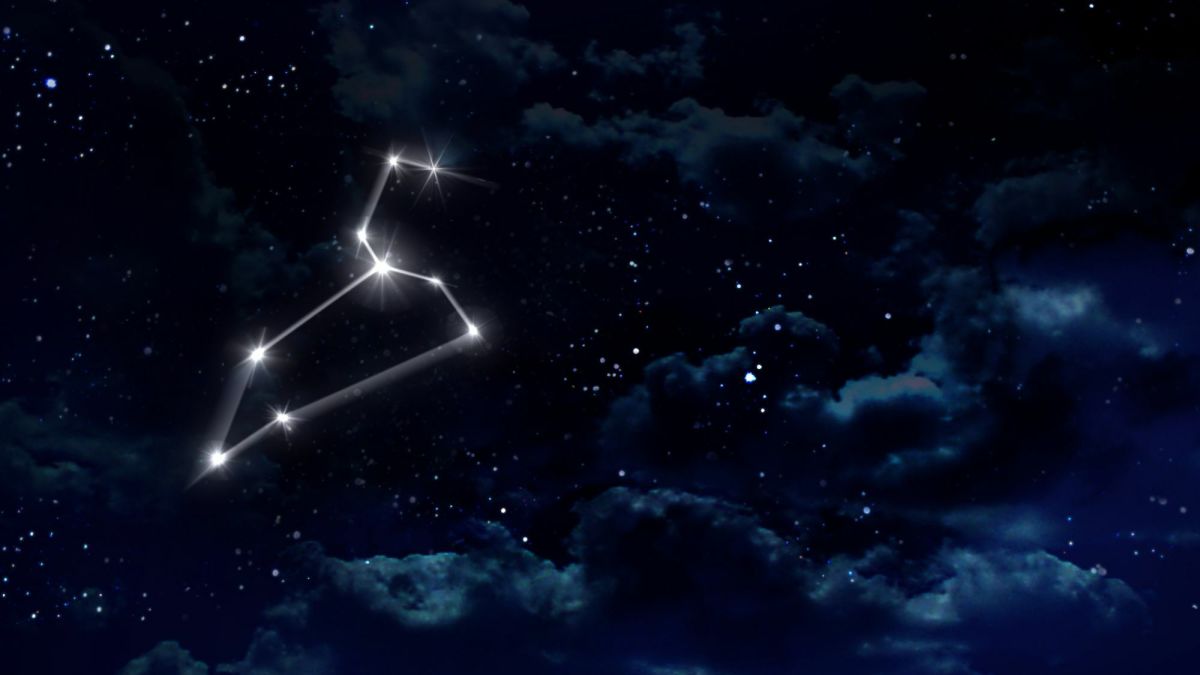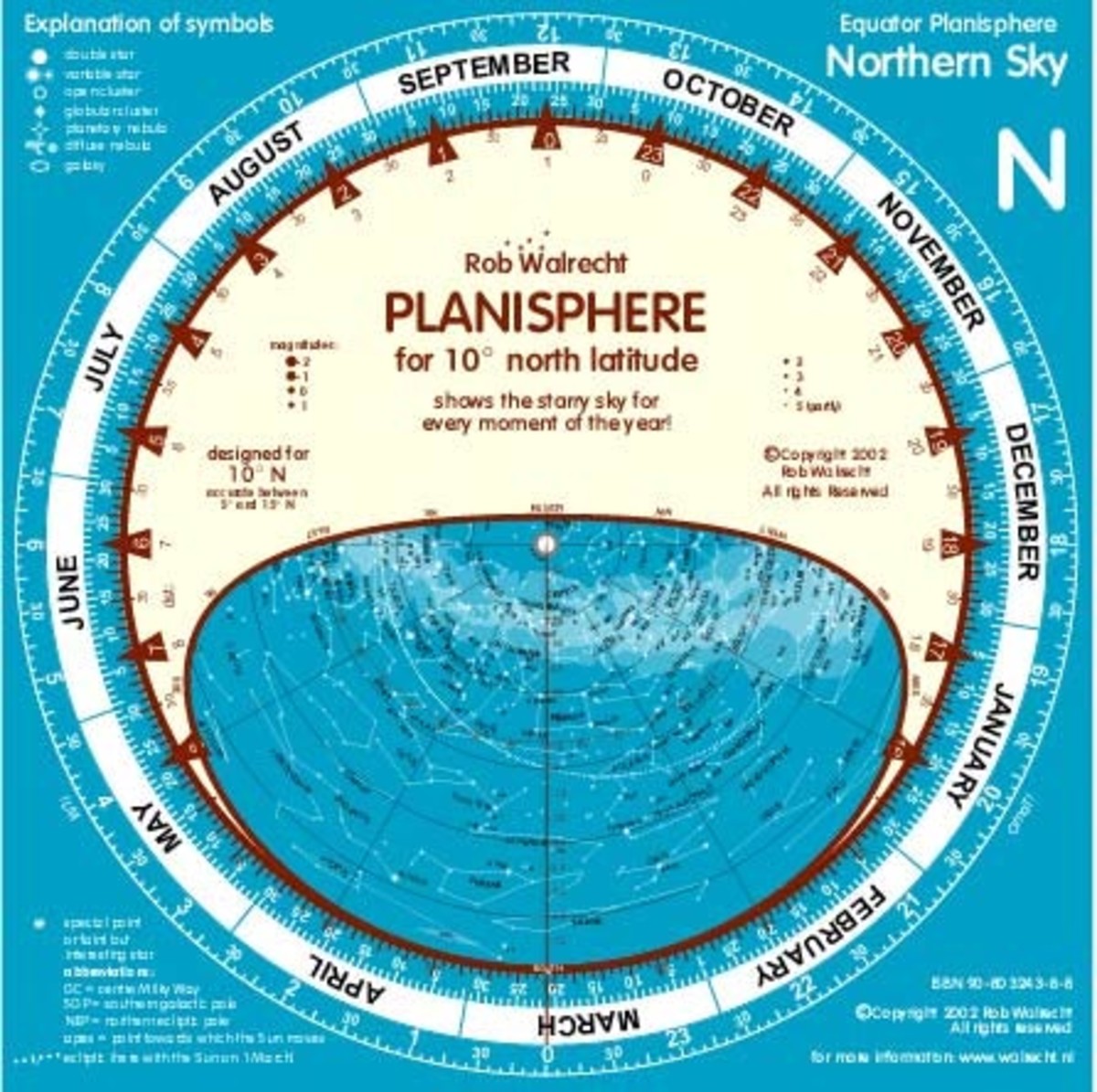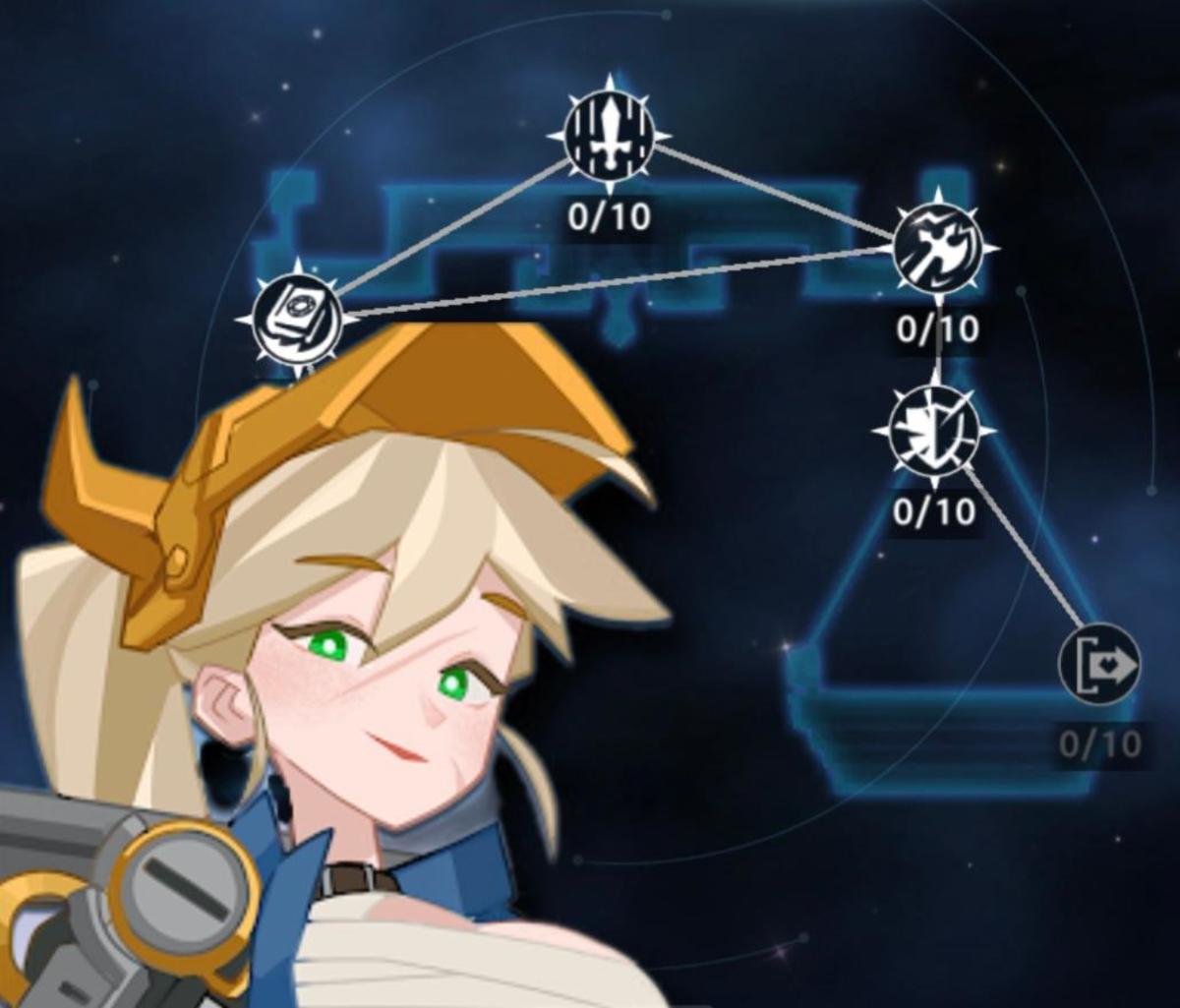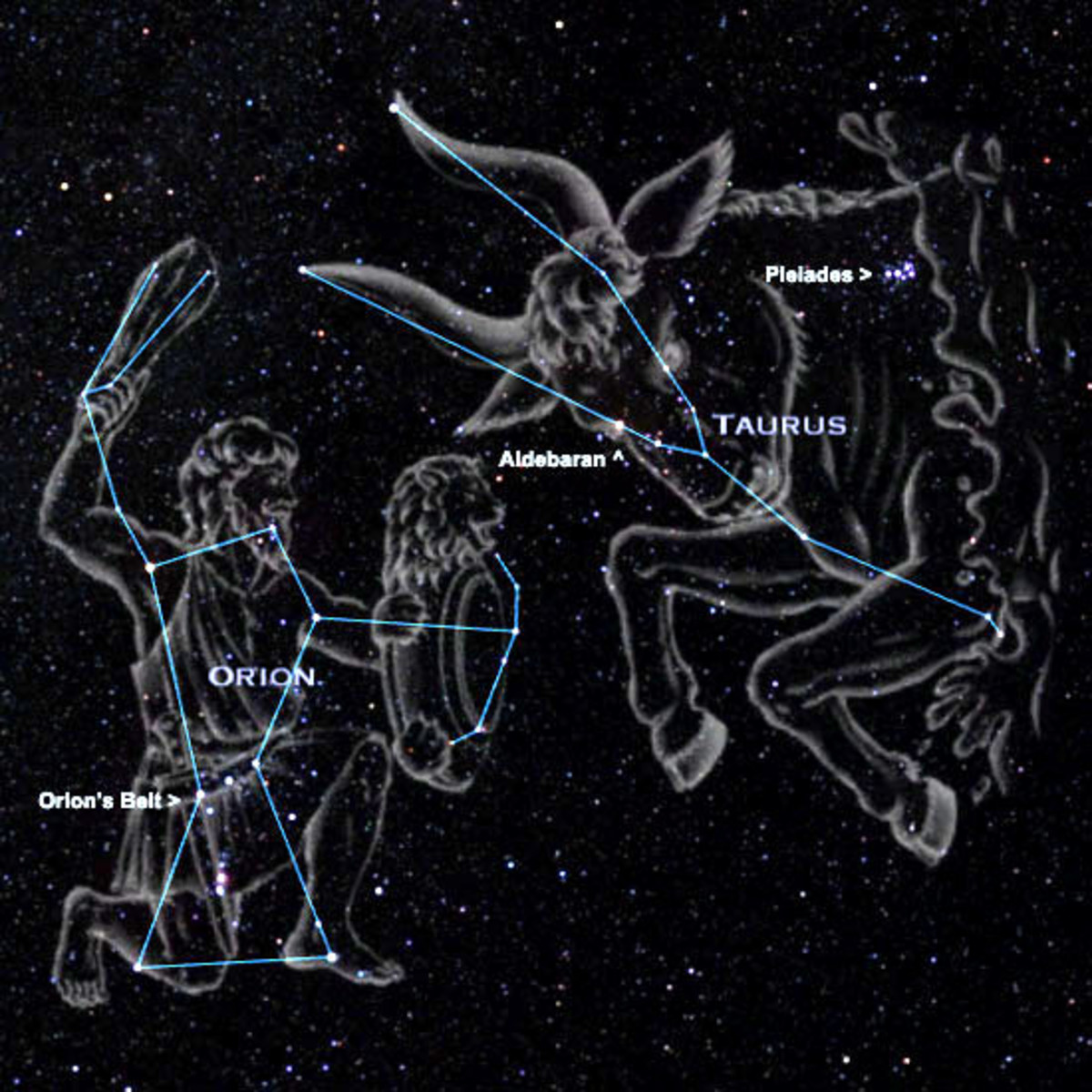Finding the Great Nebula in Orion
The Stars of Orion
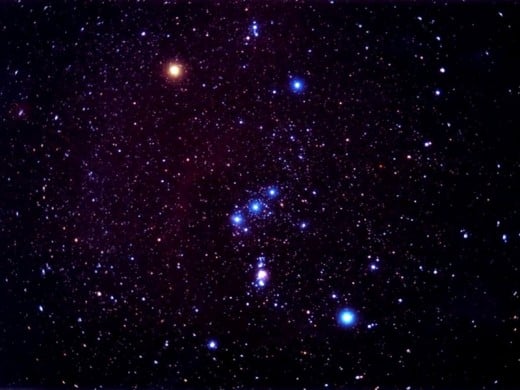
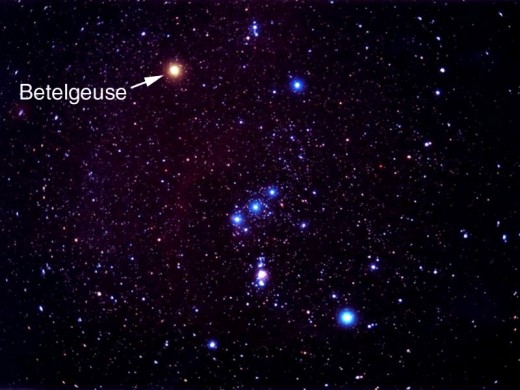
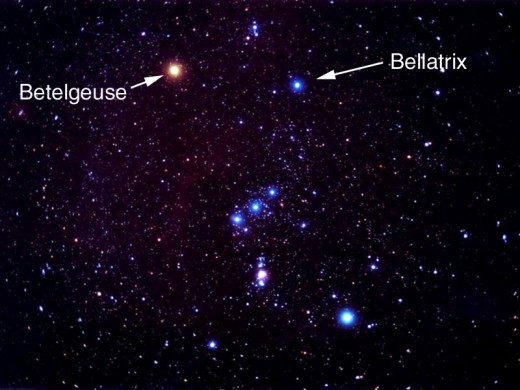
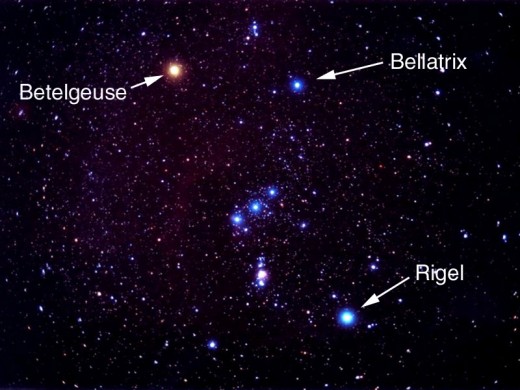
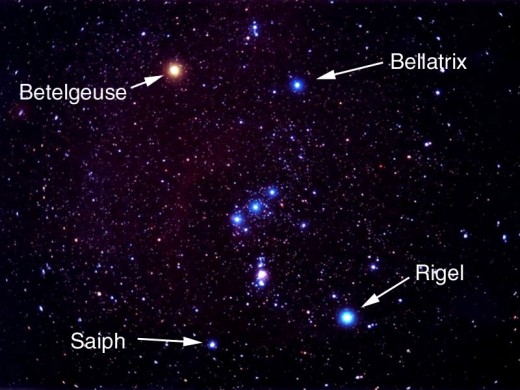
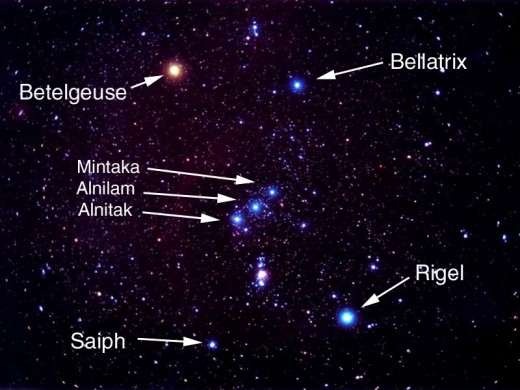
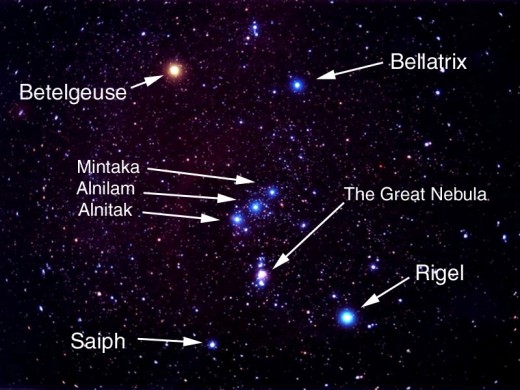
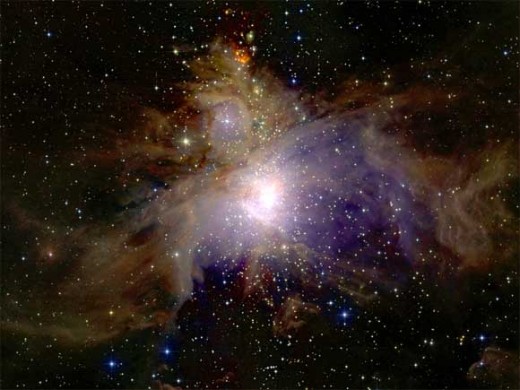
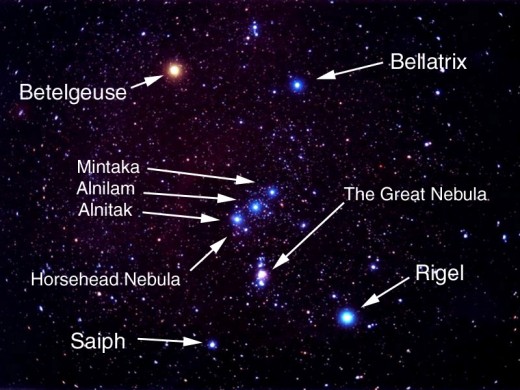
Finding Amateur Astronomy's Most Interesting Objects
There are three very recognizable constellations in the night sky of the northern hemisphere. Scorpio which dominates the late spring and summer southern skies is obvious because it looks like a big scorpion. Ursa Major, the great bear, also more familiarly known as the "Big Dipper" circles Polaris, the North Star and acts as a pointer for identifying this important navigational compass point. And it looks like a big old dipper so it's easy to find.
But for sheer wealth of cool stuff to look at, my vote for first stop for anyone with a brand new telescope to try out (after the moon, of course) is the magnificent constellation Orion the Hunter. Orion has several advantages for the neophyte star-gazer.
1. It's easy to find! It rises in the east during the wintertime and tracks across the sky just north of the ecliptic where all the zodiacal constellations like Scorpio and Taurus are lined up. In fact, Orion's bow is pointed in the general direction of Taurus the Bull. Orion is an easily recognizable slightly out of kilter rectangle of four stars forming Orion's shoulders and knees with three stars that form the belt cocked at a jaunty angle at the center of the rectangle. Three more stars form the sword hanging down form the belt.
2. Orion is most prominent in the eastern sky, just after dark, just after Christmas. It's situated perfectly for viewing with that new Christmas telescope you got.
3. Orion has some very interesting objects in it and around it that are easy to see, even with a modest telescope. Among those objects is the one we're looking for - The Great Nebula. But before we go there, Let's talk about those very prominent guide stars - the ones on the state flag of Alaska.
Betelgeuse (second photo): Located top left of the great square, this red supergiant is the alpha star of the whole constellation. If you replaced our sun with Betelgeuse, the surface would be out past the asteroid belt. Betelgeuse may not be with us much longer. It is so old and worn out that it could explode in just a few thousand years. And, it's the only star I can think of that has a comedic movie demon named after it. It's sister is also named after a demonic movie character, but there's nothing comedic about her.....
Bellatrix (third photo): Located top right of the great square, this eruptive variable is the third brightest star in the Orion constellation and lent her name to a particularly nasty Harry Potter character. Also called the Amazon star, Bellatrix was named for a mythical female warrior.
Rigel (fourth photo): Located bottom right of the great square Rigel's name gets used in a lot of Star Trek episodes, though actual planets in the vicinity of this blue supergiant probably would be uninhabitable. Rigel is not alone. Astronomers believe there are three if not four stars in this system. It's hard to tell because Rigel is an irregular variable. Most of the time it's brighter than Betelgeuse, but not always. it's name means something like "foot of the great one".
Saiph (fifth photo): Saiph is one of the lesser known stars of Orion. There are no movies named after it; no characters in children's literature. It's a placeholder in the bottom left of the great square. Named after an Arabic expression for sword of the warrior, Saiph is the same size and distance from us as Rigel and is actually a higher magnitude star. It appears dimmer because it emits most of its light in the ultraviolet bands not visible to the human eye. Saiph will one day explode in a massive supernovae, though not for a very long time yet.
The Belt of Orion (sixth photo): Though mentioned briefly in the movie "Men in Black II" as a red herring plot device, the stars in the belt don't get a lot of attention. Their names are Arabic and, as such, sound like Klingon homeworlds. Mintaka on the far right is a multiple star system made up of a massive O-type white star and a large B-type blue giant. It's is a variable because when the dimmer star eclipses the brighter, the light level dips. Alnilam, the center star is another blue supergiant located twice as far from us as Mintaka. Alnitak on the left side of the belt is a triple star system consisting of a hot blue supergiant that's the primary and the brightest O class star in the night sky.
The Star in the Sword (seventh photo): The sword is formed from 3 or 4 stars in a line hanging straight down below the belt. The bright "star" at the center is no star at all. It is, in fact, our quarry, the Great Nebula in Orion. One of the most photographed astronomical objects ther is, the Orion Nebula has sat for picture after picture in all sorts of light ranges with all sorts of filters and instruments. There have been several striking versions recently released that were taken by the upgraded Hubble Space Telescope that are just stunning (eighth picture). Through your own tiny telescope, the nebula will appear as a bright flower, blossoming at the very center of Orion's Sword. Twenty four light years across, the Orion Nebula is a gigantic star nursery. An open cluster of very young stars called the Trapezium Cluster is embedded in Orion's gaseous embrace. There are some 700 stars in varying stages of formation within the Orion Nebula.
Other Cool Things in Orion to Look At (picture 9): Within a short distance of the belt and sword of Orion you can find lots of interesting things to look at. The famous Horsehead Nebula can be found on the eastern edge (left side) of Orion's belt. Also near the belt are the Flame Nebula and a variety of multiple star systems that can be resolved with a mid-sized amateur telescope. Get yourself a map. You can spend a lot of time working in the Orion Constellation.
The stars also act as a guide to other stars. A line drawn through the belt points right to the giant star Aldebaran (the eye of the bull) in Taurus and to the left toward Sirius the Dog Star, the brightest star in the night sky. If you follow the line toward Aldebaran and continue on, you'll run into the spectacular Pleiades cluster, a perfect viewing treat for a cool, crisp clear winter evening.


